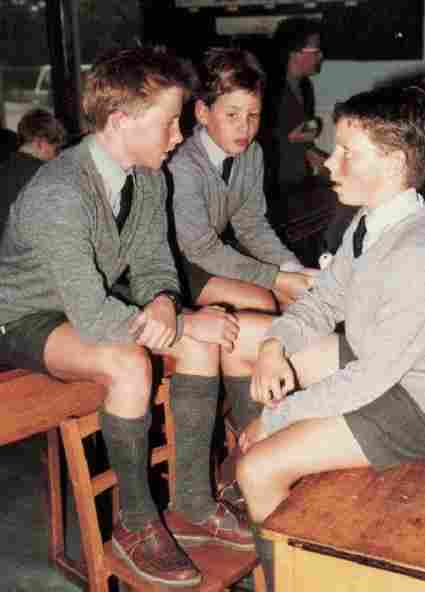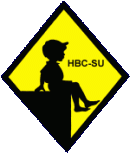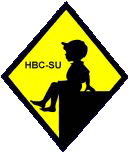
Figure 1.--English boys beginning in the 1970s preferred to wear school sandals with wideer center piece. Some schools insisted on specific styles of school sandals. |

|
School sandals were more popular in England than any county. I think
sandals actually were initially an English style, although I can not
yet substantiate this with any certainty. I first note them in the 1920s, but have no real details on when they originated. The traditional style with a narrow center strap were commonly worn by English boys from the 1920s through the 1960s. At first they were not school wear, but casual footwear. The conventions for wearing sandals changed significantly over time. By the 1960s only small boys were wearing closed-toe sandals outside of school. Styles also negabn to change with boys increasingly wearing a new style with a wide center strap. The style with the narrow center strap, however, continued to be worn by girls. They were also referred to as sand shoes, before becoing associated with school wear. After the 1960s they were mostly worn for school amd the style with the wide center piece became mpre popular with boys. Most English boys wore sandals with short trousers. This was true at both state and private chools. After the 1960s when wearing shorts at school began to decline so did school sandals. Some schools required shorts as part of a school uniform. In the 1980s as many schools began changing the uniform to long trousers, some
schools continued to require sandals. This mostly occurred at private schools. Thus some boys also wore sandals with long trousers. Boys at elementary schools that
did not have uniforms might also be seen wearing sandals and long trousers. School sandals were commonly worn with grey ankle socks and kneesocks. Much was less common was white socks. Boys of quite a wide range of ages wore school sandals through the 1950s. This was the era before tennis shoes were widely popular. It was not uncommon to see even younger teenagers playing in sandals, although they were worn to school mostly be elementary age children. Originally school sandals were worn by boys from a wide range of social classes. England has a much more rigid social structure than America and dress styles often has destinct social cinotations. Thus the popularity of this style with a wide social strata is interesting. This began to change in the 1960s, however, and it was the prep schools
which required children to wear sandals. As a result, the style began to be seen as an upper class style.
British boys have primarily worn sandals at nursery and primary schools. The conventions and styles at school have varied somewhat over time.They have been worn at both state primary schools and private preparatory schools. We have noted younger boys at secondary schools wearing them, but only rarely. School sandals were commonly worn to school by elementary-age children through the 1960s. Even younger secpndary-level boys wore them. After the 1960s they begin to decline in state schools, but were still widely worn at preparatory school in the 1980s. Prep schools usually often had very strict uniform requirements. This often included footwear. We note, however, that even with schools that required sandals for everyday schoolwear, they usually were not insistent on a particular brand or style. Almost all required closed-toe sandals, but the children usually wore a variety of styles. A general similarity of color was commonly enforced.
|
English school sandals were closed-toe
sandals looking more like shoes than what we generally think of sandals. They were commonly referred to as sand shoes in England. The most common type of school
sandal was what Americans would refer to as strap shoes with a "T" bar strap. Another less common type was double bar sandals. A new style appeared in the 1960s. The width of the center stap was increased. At first it was only increased to an inch or less. Eventually became so wide that the school sandal came to look much like a shoe. This style became much more popular with the boys than the traditional style which the narrow center piece that the girls continued to wear. While the "T" strap design was the primary desisn for school sandals, some boys also wore the two bar design. It was not vet popular, however, as many boys considered it a girls' style. Beyond these basic styles, there were many variations. Some sandals had various types of perferations to increase ventilation. They also came with a wide avariety of soles, including some that left animal tracks.
Both boys and girls wore school sandals. There were diiferences in styles, but this is a complicated matter. There were no clearly boy and girl styles. There were, however, preperfences and these varied over time. Before World War II there was no discerable difference. After the War, especially by the 1960s, differences began to appear. Boys tended to favor the sandals with a wider center strap. giving more the appearance of a shoe. Girls did not wear this style. Almost always girls wore the style with the narrow center strap. Boys also wore this style, but by the 1970s they more commonly wore the wider central strap. Girls also more commonly wore the double strap style. We note some boys wearing the double strap style, but it was no very common for boys.
|
English school sandals came in several colors. The most common color by far was a darkish brown. The vast majority of English boys wore these dark brown sandals. School sandals were also available in light brown or tan, redish brown, dark blue, and black. I have seen white, but this was rare and not commonly worn by boys. A reader writes, "Girls also wore school sandals, but in a much wider range of colors. Boys' school sandals were almost always brown - white (obvious comparison with school socks) were definately for girls. Little boys (pre-school) did have different colours - my little brother had a blue pair I recall - but after that they were brown."
I am not positive just who first designed and marketed these sandals. I believe they were first marketed as a comfortable summer cassual shoe and only later adopted for school wear. I have noted double bar sandals in the 1900s, worn by affluent children during the summer. I have not noted schoolmsandals diring the 1900s or 1910s, but can not yet confirm that they did not appear before World War I (1914-18). The first that I have noted closed-toe sandals with the single strap and narrow center piece was the 1920s after World War I. At the time, however, they were called sand shoes and not normally worn at school. I think they became known as school sandals because many British families of modest means did not have the money to provide several different pairs of shoes. Thus they simply started wearing their sandals to shoe. Originally sand shoes were appealing because they were less expensive than ordinary shoes. The basic style with narrow straps were commonly worn through the 1950s. The style of strap shoes began to change in the 1960s with the center strap becoming wider for boys. Girls continued to wear the style with the narrow strap. The school sandal is still widely worn by boys in England, but mostlty the style with the wide center strap.
Terminology for clothing has changed over time. There are many examples of this. Here the term "knickers" is probably the best example. Knickers was once used to mean short trousers in England, but today thay usage is virtually unknown. It seems to us that school sandals were once called "sand shoes", I think because they were often worn on vacation to sea side resorts. I seem to recall this usage in various English books I have read from the early 20th century written before World war II. By recollection is a little hazy here as these are books I read before I began working with HBC and thus don't have citations readily at hand. A British reader questions this. He writes, "I think you are mistaken when you refer to sandals also being known as sand shoes'. Sand shoes was another term used instead of 'plimsols' which were canvas, rubber soled gym shoes used in the gymnasium and for outside sports activities at school(they were also issued to me when I did my national service in the army for physical training).We also wore them in the summer instead of sandals, especially if we were on the beach or at play where it was very dirty or muddy as they could be easily washed. This was in the northeast of England, my cousins in the midlands referred to them as 'pumps' but sandals were always called sandals. We wore sandals for school during the summer months for coolness up until I was about 13 years old, after which age they were less popular
for school wear but were considered ok for holidaywear. During the rest of the year from fall through to the end of April the climate made sandals inappropriate footwear."
English boys from the 1920s through the 1960s commonly wore sandals, also referred to as sand shoes, for play, especially during the summer. They were more commonly worn than tennis shoes (or "trainers" or "slippers" as our British friends might call them) which were mostly worn for gym at school. The sandals were also referred to as school sandals because they were commonly worn for school. Here they were normally worn for everyday school activities. On special occassions when the children dressed up, the boys woyld often wer shoes rather than sandals.
A range of different clothing items were worn with sandals. Sandals were commonly standard school wear. When the the boys dressed up for church or other special events they commonly wore shoes. Actual regulations varies from school to school. Most English boys wore sandals with short trousers. This was true at both state and private chools. After the 1960s when wearing shorts at school began to decline so did school sandals. Some schools required shorts as part of a school uniform. In the 1980s as many schools began changing the uniform to long trousers, some schools continued to require sandals. This mostly occurred at private schools. Thus some boys also wore sandals with long trousers. Boys at elementary schools that did not have uniforms might also be seen wearing sandals and long trousers. School sandals were commonly worn with grey ankle socks and kneesocks. Much was less common for boys were white socks--either white ankle socks or white kneesocks. A British reader writes, "One thing I would say on reading this page's section on "clothing" is that I think that it was very rare to see a boy wearing sandals with long trousers. That is obvious really - sandals and shorts (even for those who didn't wear them as routine) being Summer wear. know that once it got to late Autumn and my Mum decided that it was time to get out our Winter underwear and so on our sandals were packed away along with any short socks or thin Summer shirts and we would not see them again until the Spring. You can probably see why I looked forward to the Spring! (although I hated the short socks which, thankfully, were not allowed at school)." HBC has noted boys at prep schools wearing sandals with long trousers. We note bioys wearing sandals with both knee socks and ankle socks and during the summer, children at some schools did not wear hosiery with sandals.
Boys of quite a wide range of ages wore school sandals through the 1950s. This was the era before tennis shoes were widely popular. It was not uncommon to see even younger teenagers playing in sandals, although they were worn to school mostly be elementary age children. Older boys in the 1960s stopped wearing sandals. By the 1980s they were primarily worn by younger elementary-age boys and at a few preparatory schools where all the boys were required to wear them. By the 1990s even at prep schools, only the older boys generally were required to wear sandals.
|
English boys in the 1920s and 30s commonly wore sandshoes or sandals during the summer. It was common to see boys at the beach or playing with sandshoes worn without socks on a warm summer day. As schools began to adopt sandals for school wear that imposed different rules about hosiery. Here there were quite a range of alternatives. Some schools followed the summer convention. One approach was to wear sandals with socks, usually knee socks during the fall and winter. Often the boys were not required to wear socks during the warm spring and summer months. This seem to have been a popular alternative. At some schools the boys looked forward to the warm weather when they no longer had to wear socks. Some schools adopted ankle socks, at least for the warm months. Other school continued to require the kneesocks even during the summer.
The most common brand was Clark's school sandals. British contributor remembers Clarks shoes during the 1970s. They made a boys sandal called the 'Wayfinder'. An English contributor recalls, I owned a pair of these and was very happy to have them, because, in the heel they had a compass and the soles were embossed with animal footprints (easy to retrace your footsteps in the snow. Another popular style throughout during the 1960s was the Kiltie Alex sandal, which was made with dark tan leather and given an aged effect. The pattern cut into the sandal consisted of a small round hole, then an inch-or-so wide, very narrow slit, then another small round hole. This pattern was repeated another two times, one under the other. Another very common style was called the Wonder sandal, which was a lighter brown in colour with a 'daisy' pattern.
According to a copy of an advertisement I have from about 1965 boys' sandals cost between 22
shillings and elevenpence and 32 shillings and elevenpence, obviously in pre-decimal sterling.
One British contributor reports that he does not recall I don't recall any of the freebies that came with sandals. He does recall, however, the secret spy guides and compasses that came with some kinds of shoes.
|
The wearing of school sandals began to decline during the 1970s and especially the 1980s as the
children generally preferred to wear the tennis shoes that, along with jeans had become so popular. School sandals are
still worn to school, but now mostly by little boys. They are rarely worn now by boys after school. British boys now, like American boys, mostly wear tennis shoes after school.
Many private schools, called preparatory schools in
England, often required the boys to wear them for every day school
wear. Preparatory schools are generally for children from 8-13 years
of age. Virtually no prep schools allowed boys to wear tennis shoes.
For dress occasions, the boys would usually wear lace-up oxfords.
Originally school sandals were worn by boys from a wide range of social classes. England has a much more rigid social structure than America and dress styles often has destinct social cinotations. Thus the popularity of this style with a wide social strata is interesting.
This began to change in the 1960s, however, and it was the prep schools which required children to wear sandals. A HBC reader at an Anglican primary school tells us that he did not sence note scocial class differences in the 1960s. What he noticed was age differences. The fact that they were a very garment garment at prep schools even though they became less common at state primary schools, suggests social class preferences to us. But this topic requires further investigation. Our reader writes, "I'm not sure if class came into it from what I can remember.As I told you nearly all boys wore sandals at my primary school in the Summer. Some liked them some didn't. I liked mine as I have told you. At secondary school - from 1970 on - nobody wore them except for the "German" boy I told you about and my little brother never wore them at his new primary school where they didn't have uniform and an early form of trainers were coming in. As a result, the style began to be seen as an upper class style."
Some HBC readers recall wearing school sandals as boys. Here are some of the accounts. Some boys can not recall much about them. Others have very definite memories.
School sandals are still worn by British boys, but not as commonly as before. British boys now
usually wear tennis shoes like their American counterparts. The sandals that are commonly worn to school are different than those worn earlier.
The center strap has been expanded to cover most of the front, giving it more of a shoe than a sandal look. The
sandals with a narrow center strap are now mostly worn by girls as is the case in the United States.
Navigate the Boys' Historical Clothing School Sandal Pages:
[Return to the Main school sandal page]
[Return to the Main national school sandal page]
[Return to the Main English strap shoe page]
[Return to the Main English footware page]
[]
[France]
[Hungary]
[Ireland]
Navigate the HBC School Section:
[About Us]
[Activities]
[Chronology]
[Clothing styles]
[Countries]
[Debate]
[Economics]
[Garment]
[Gender]
[Hair]
[History]
[Home trends]
[Literary characters]
[School types]
[Significance]
[Transport and travel
[Uniform regulations]
[Year level]
[Other topics]
[Images]
[Links]
[Registration]
[Tools]
[Return to the Historic Boys' School Home]
